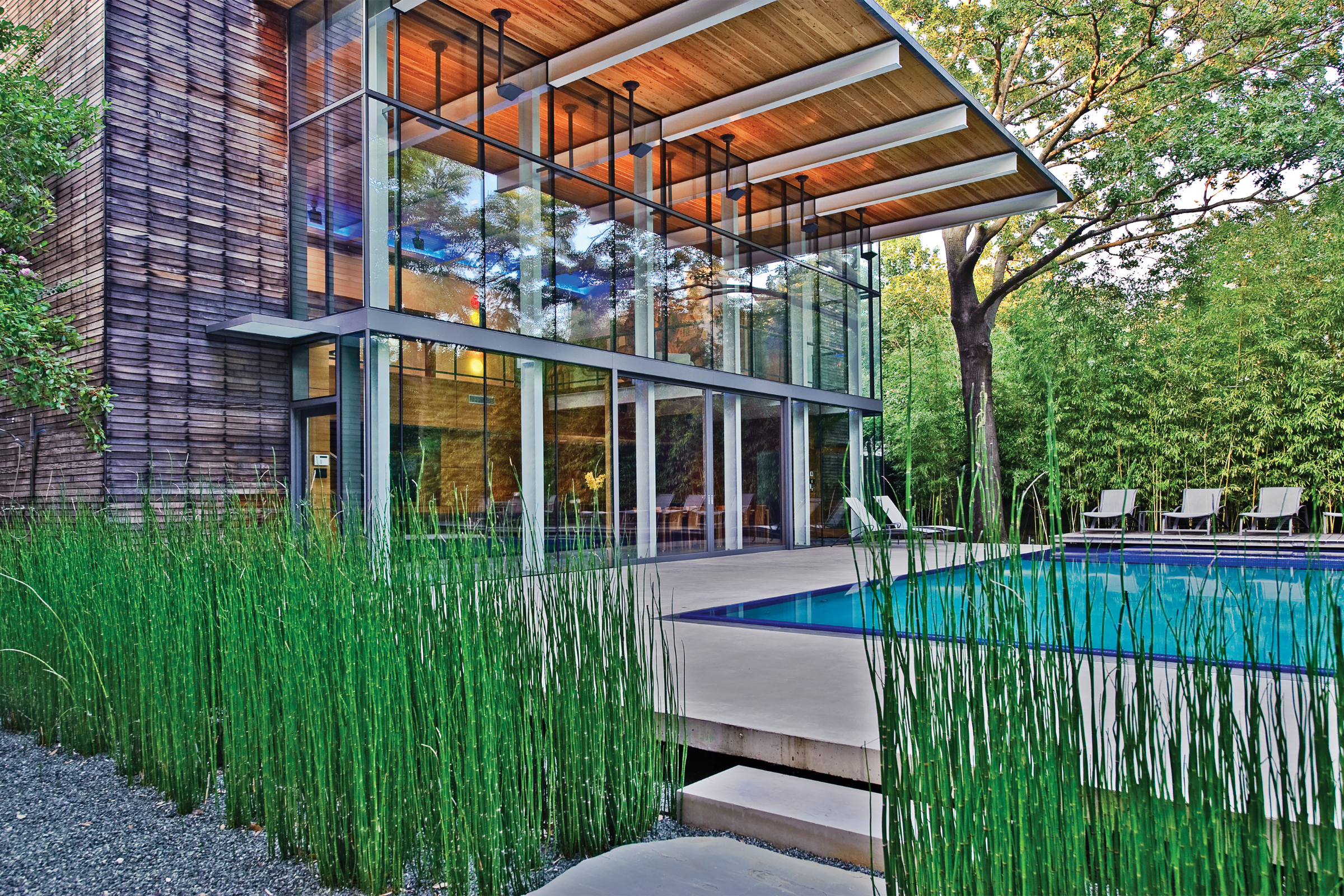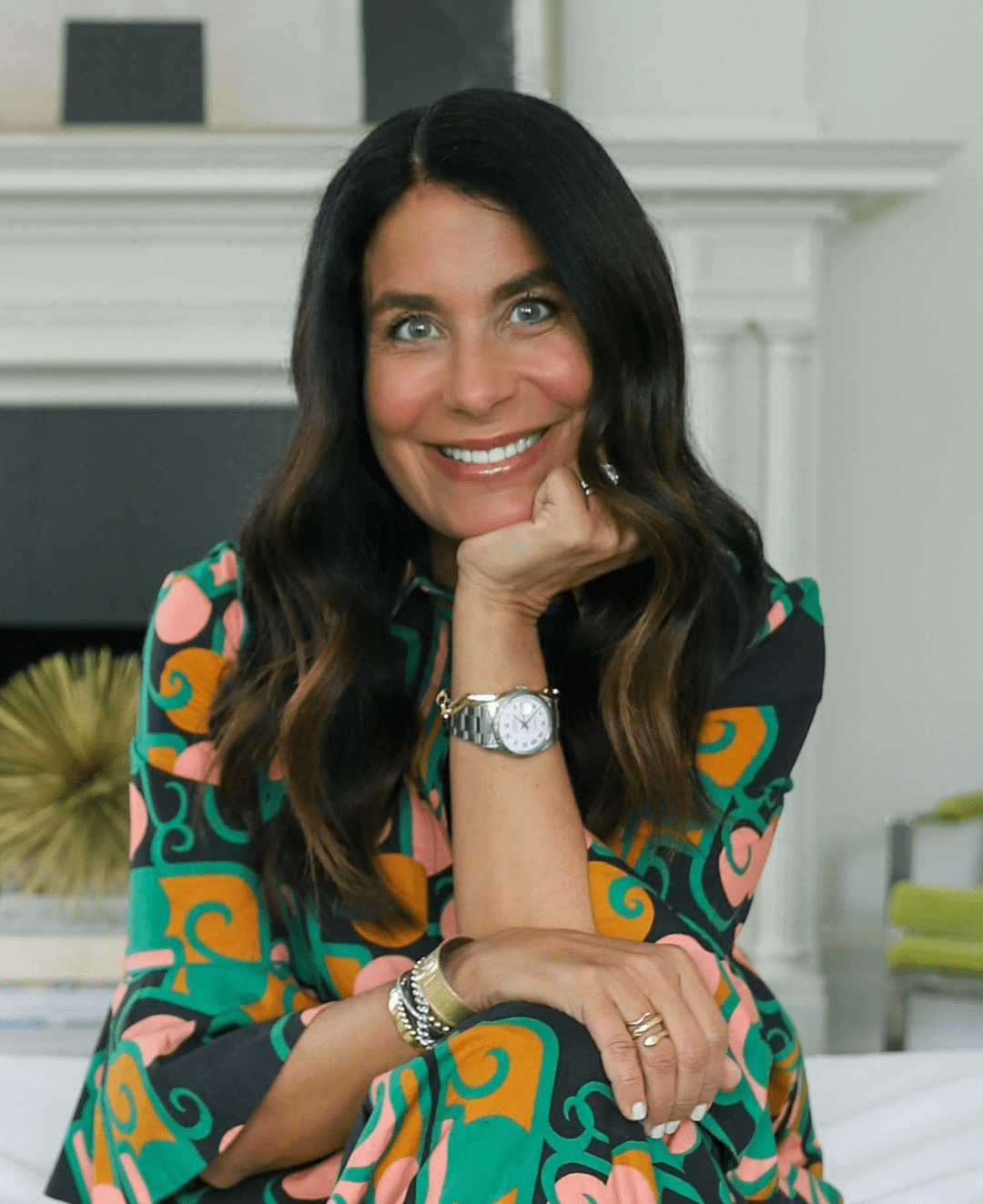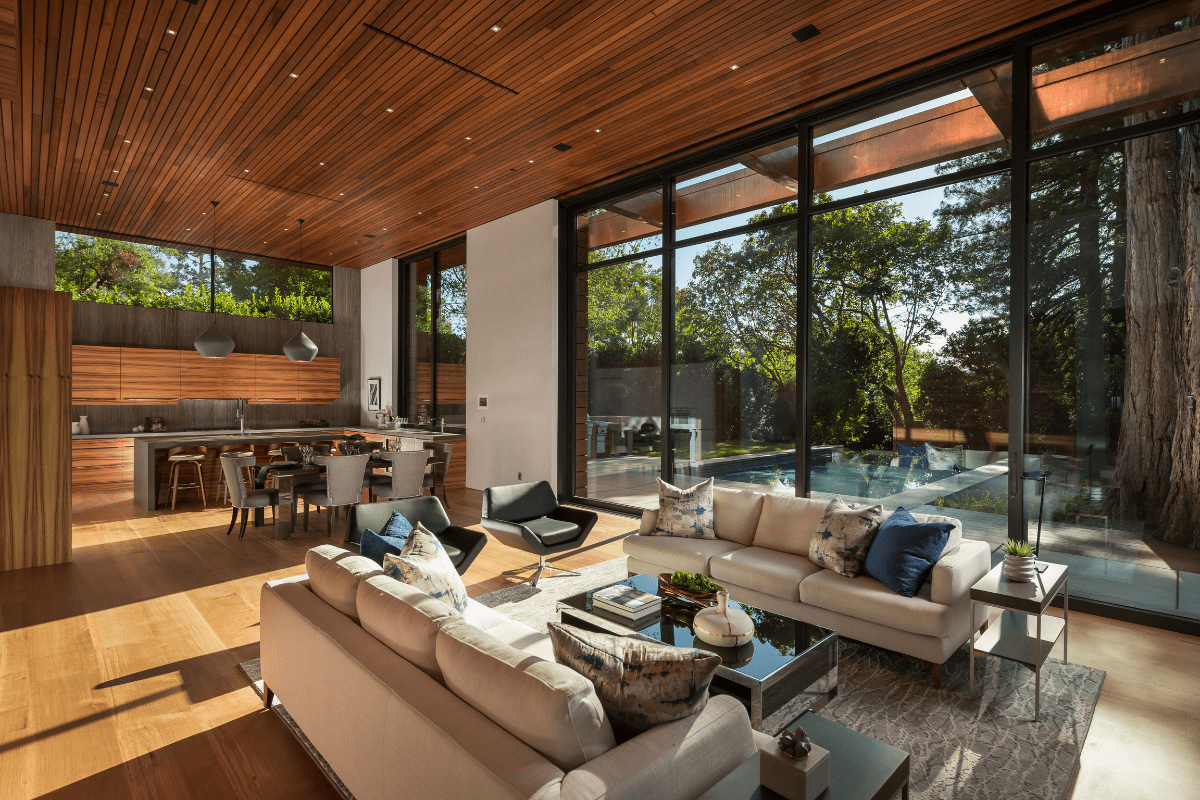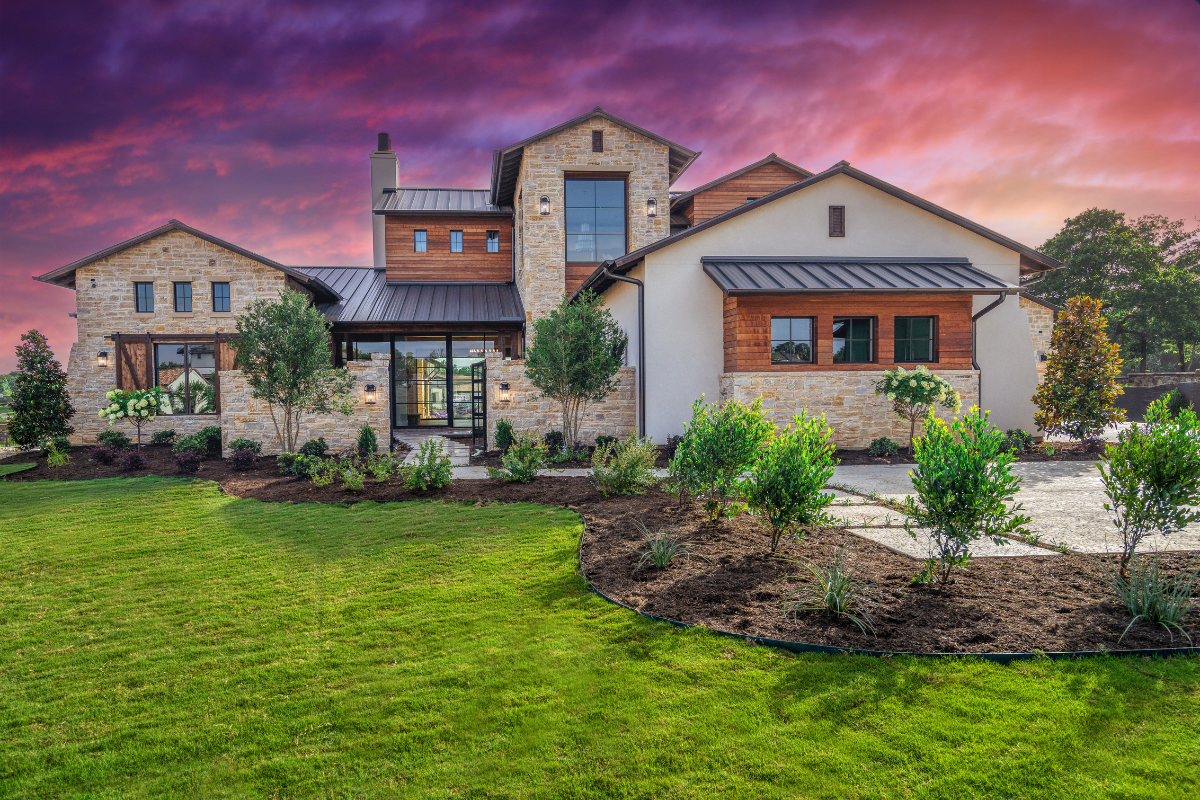Wellness is having a moment. Spas and retreats have never been so in demand, yet the real magic seems to be happening more and more at home. Our post-pandemic culture is looking for a little extra — not just a house, but a sanctuary that also delivers a smarter, safer way to live. “A home’s design and materials can impact our overall health and well-being,” says Brandon Berg, Andersen Windows & Doors Senior Vice President of Research, Development and Innovation, adding that we collectively spend more than 90% of our time indoors and 60% inside our homes. “We’re proud to play a role in making homes a healthier place to live. It’s our responsibility to work with experts to achieve these important elements of wellness, from the materials we use to optimize air quality to the designs that bring in natural light.”
For interior designer Cara Woodhouse, self-care equates to soaking in a bespoke bathtub with skylights letting in nature from above. For developer Basil Starr, it’s master planning communities that have the potential to improve the planet. For real estate agent Kathryn Kennedy, wellness equates to walkability and the neighborhood comeback. For builder Curt Dubose, it’s thoughtfully incorporating technology into custom home design. All of these concepts — both big and small — that make our houses feel better truly help the environment breathe better, too. And a breath of fresh air is the original dose of wellness.
Cara Woodhouse
Interior Designer
Cara Woodhouse is in the mood to make your home feel good. The New York interior designer feels so strongly about it, she’s writing a book on the topic slated to debut next year. She is known for her work crafting evocative, curvaceous, colorful interiors along with her collaborations with the likes of ABC Stone and Rug Art. In a moment of reflection, she pauses to discuss everything from spirituality to accessibility — plus why pink has her feeling all the feels.
“Our homes are inherently healing spaces,” says Woodhouse, who travels internationally for both work and play. “How you feel, live and function within your home sets the tone for how you walk out the door into the world. And whenever I go away, my home is always calling me back. Everyone should feel that way.”
While part of this form-meets-function philosophy is purely practical, she also leans into a little “woo,” be it crystals, feng shui or simply a dedicated space for spirituality. As meditation is having a moment, she has found herself creating custom in-home studios. “A lot of my clients are taking time to rebalance, and knowing you have a sanctuary for that release feels so good,” she notes. These modern Zen rooms are cozy, light and filled with floor pillows, while often sporting a separate treatment area or even an infrared cedar sauna.
Another natural spot for designing that at-home sanctuary? The bathroom. This is where Woodhouse reveals her love of marble, accentuating surfaces with cool, luxe stone in eye candy shapes and hues. She recently used pink onyx, which reminds her of rose quartz, known to be all about self-love and, in this case, self-care. “I’m known for pink, but I’m so not a girly girl,” she laughs. “There’s just something about it when done beautifully — not Pepto-Bismol pink, but a super elevated, sophisticated tone that is nurturing, calm and cool.”
As with color, light really sets a mood. In her own midcentury home in Roslyn Harbor, Woodhouse reconfigured a bathroom with skylights that stream natural light down toward the bathtub. “Windows are everything — they’re the original TV — and skylights are literally like art,” she notes. “When you’re taking a bath, all the elements are right above you, which is so calming.”
While a full remodel with skylights and stonework isn’t always in the budget, therapeutic design touches also come in easily accessible doses. It can be cleaning the chaos out of a closet or a nightstand drawer. It can be thoughtfully selecting your go-to glassware or that rug underfoot. These are just some of the high/lows that Woodhouse plans to pinpoint in her forthcoming book, with the hope that it helps everyone find contentment at home. As she explains, “One client in San Diego told me, ‘I’m going to die in this house; I want it to make me happy.’” And that is exactly Woodhouse’s goal.
Basil Starr
Developer
In Desert Hot Springs, California, wellness and modernism have always run deep. Hollywood royalty escaped here to soak in the spas while renowned architects made their marks on area residences. Now, the oasis has another claim to fame: being the site of the world’s first 3D-printed, net zero-energy community. While it might look like a movie set, it’s a real neighborhood of 77 futuristic houses, complete with swimming pools, fire pits and mountain views. And Basil Starr, the mastermind behind the master-planned Palari Villas Scenic Crest development, believes these “homes of tomorrow” may just save the planet.
“I wanted to do something entirely different,” says the founder and CEO of Palari Group, where the mission is to build a better, more sustainable future. “Change starts with the individual home, but it extends to the homeowner.”
That immediate change can be seen in California, but Starr is thinking globally. Originally from Ukraine, he is in talks to help rebuild his homeland in his typical time-sensitive, eco-friendly manner, plus he employs refugees on his team. Palari is also leading the way toward a carbon-neutral future in support of United Nations Sustainable Development Goals. Near or far, his houses all have the same principles: beauty, affordability and sustainability.
For his Desert Hot Springs “sustainable sanctuaries,” Starr fine-tuned the process from start to finish. To begin, he enlisted Mighty Buildings to accelerate and revolutionize the construction phase. Typically, it takes 10 to 12 months to build a home, yet they did it in four thanks to a secret weapon: 3D printing. That means all those striking white patterned walls (which are made of mostly recycled glass and are tougher than concrete) are constructed offsite. Since everything gets shipped flat pack to the lot, installation is quick and inexpensive. The team assembles a watertight envelope — roof, walls, doors and modern Andersen windows — in a mere four days, cutting down on both waste and cost.
“Our beautiful building blocks make the process easy and extraordinarily fast,” says Mighty Buildings Chief Strategy Officer Chris Murphy, who sees their kits as an answer to the housing and climate crises in this economy. “Prefab unlocks the ability to build quickly and efficiently, especially in places that need it.” And this is exactly the course correction Starr is shooting for when it comes to creating sustainable sanctuaries for the greater good.
Although Starr’s “home future-proofing” begins with the walls, it extends inside. Tapping into the latest technology keeps every abode ultra smart and energy efficient, increasing value and lowering utility bills. To start, each residence runs wholly on gas-free energy and uses gray-water recycling, which reduces consumption by nearly half. Smart features also encompass thermostats, lighting and battery backup — music to Californians’ ears after recent blackouts. And if anything needs to be tweaked, fixed or micro-customized, an online portal is always at the ready.
If it sounds a bit like the Tesla of homebuilding, that’s because it is. Starr firmly believes his model could enhance global wellness by drastically decreasing energy consumption while increasing housing for the world. “Tesla revolutionized the auto industry,” he affirms. “We want to do the same for housing.”
Kathryn Kennedy
Real Estate Agent
Beautiful homes became an obsession for Kathryn Kennedy as a young girl. Growing up in the Twin Cities, she would flip through her grandmother’s design magazines, igniting a lifelong love for houses. When that obsession became her business — and a successful one, as she’s been recognized by business publications as well as the Coldwell Banker President’s Club (the top 50 agents for volume company-wide) — she found real estate to stretch far beyond just finding beautiful abodes for clients, especially in recent years. It became about helping them create their own haven for well-being.
“Wellness is all about being happy in your space, especially your outdoor space,” says Kennedy, whose family of four has a built-in serenity spot thanks to their St. Paul backyard pool, a feature everyone now wants. Post-pandemic, she’s seeing a shift in what people are looking for both inside and out when it comes to the new era of “home sweet home.”
“My buyer clients bring up different points now,” she explains. “During the pandemic, they enjoyed spending more time with their family at home, so they want their house tailored around that.” These days, affluent buyers have wish-list asks ranging from gyms and golf simulators to tennis courts and spa-like bathrooms. Bonus rooms are popular — whether it’s a dedicated office or a reading nook carved out by a stairway — as are decks and patios for entertaining.
Another top request? A waterfront property, especially in the Land of 10,000 Lakes. “Centering your life around a body of water promotes mental, emotional and physical wellness,” she notes. “If you live by a lake, you’re more apt to go for a walk.”
While some clients are looking for that lakefront retreat or a pastoral hobby farm, Kennedy says plenty of people are seeking out downtown condos. The biggest upside to urban living is walkability — an instant wellness perk for downtown dwellers who can stroll to a grocery store or coffee shop and have quick access to nearby parks and biking paths. Plus, having social company close by is always a good idea, as Kennedy explains: “Old-fashioned neighborhoods — where you actually see your neighbors — are back!”
Whatever the size or the locale, there’s one thing she declares absolutely invaluable when shopping for real estate, and it’s critical for the well-being of both the home and the homeowner. “Natural light tops the list,” she shares. “Vitamin D makes for a better mood and increases productivity, which is so important with so many people working from home now.”
That’s why her clients are inevitably drawn to residences with large windows and skylights. High-quality insulated windows also assist with soundproofing (especially in urban areas) and promote sustainability alongside energy-efficient elements like solar panels and clever landscaping to filter sun and create seasonal shade. But the greatest perk by far is the spirit-boosting serenity that sunlight pours into a space. “An abundance of natural light lifts us up; it truly helps us kick the winter blues and makes us feel cheerful,” Kennedy says in her trademark cheerful tone. And the exhale that comes from feeling happy at home is perhaps the most beautiful part of all.
Curt Dubose
Builder
Ministry and mental health aren’t typical stepping stones into homebuilding, but for Curt Dubose, they certainly set the path. He was leading worship when his travels took him to Littleton, Colorado, days before the Columbine massacre, and he became struck by how unaddressed anxiety and depression issues were. Shortly afterward, his young son developed spinal meningitis, a diagnosis resulting in hearing loss (later to be corrected by a brain-implanted, hardwired technology). In an effort to stay closer to home, Dubose joined the family business, spearheading business development for residences with a very unique focus: healing.
“I had just been down a rabbit hole of darkness,” recalls the CEO of Texas-based PentaVia. “My curiosity about depression, anxiety and healing were at an all-time high.” To redirect these thoughts, he created the Five Roads of Design, which address the physical, social, intellectual, emotional and personal aspects within a residence. This acts as a road map for creating the ultimate custom abode — but it also strikes a chord for Dubose. He didn’t want just a smart home; he wanted a home strong enough to protect a family.
What does this mean exactly? To be sure, it goes far beyond security systems and safe rooms. By leveraging technology and design, the team provides the highest degree of personalization for their clients. For instance, they may devise an automated nursery where the room itself monitors an infant’s vitals and has real-time data ready to share with the pediatrician if needed. And when it comes to indoor air quality, the company was on it well before the pandemic, installing energy systems that sanitize and purify air.
“We are utilizing technology to create wellness,” Dubose explains. “It’s a unique opportunity to do something thoughtful, and we go down roads others typically don’t go down.”
In thinking about these roads of design, he aims to create abodes that are an extension of clients’ values. Sometimes that’s as simple as imagining the best spot for the Christmas tree, then shifting walls and stairways to fit exactly where the homeowners envision their best memories forming. Other times, it’s encouraging kids to spend fewer hours on screens by creating a performance stage with built-in microphones for nightly entertainment.
Creativity and wellness come into play by way of craft rooms, edible gardens and comfortable courtyards, too. The last of which is a PentaVia trademark to let in naturally healing light and fresh air through large-scale windows while maintaining a sense of privacy.
“Builders don’t typically talk about healing,” Dubose says, “but we have a responsibility to our clients to think about these types of things.” And he hopes the conversation will only grow from here.











